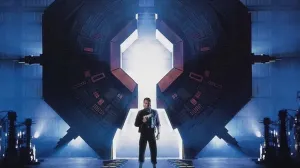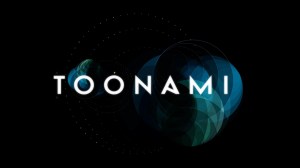At New York Comic Con, the new trailer for Star Trek: Discovery revealed that Klingons are getting their hair back. While ostensibly a move to bring Discovery more in line with established Star Trek canon, the explanation for the change raised some additional questions.
Videos by ComicBook.com
At New York Comic Con, Star Trek: Discovery star Mary Chieffo explained why her Klingon character, L’Rell, had a new head of hair in the Season Two trailer.
“You might have noticed in the trailer, there is a bit of a new aesthetic going on and that is a really exciting addition that has been made and is inspired by Glenn Hetrick, who is our designer and a huge Trek fan himself,” Chieffo said during the Star Trek: Discovery NYCC panel. “He was inspired by season six, episode 23 of The Next Generation, ‘Rightful Heir.’ There is a reference when Kahless is brought back as a clone. The way he proves himself is he tells the story of how he cut off a lock of his hair and dipped it into a volcano and made the first bat’leth, with which he killed Molor, the terrible tyrant who was running Qo’noS at the time.
“So, in the spirit of Discovery, we took that one little beautiful seed that was planted from an earlier iteration and kind of expanded on that, and we see that in a time of war the Klingons would shave their heads, and in a time of peace, we start to grow it back out. I really love the symbolism of that.”
While this explanation makes sense in a vacuum, some fans noted a few apparent continuity problems. The Klingons had already shaved their head before entering open warfare with the United Federation of Planets. On Twitter, Chieffo pointed to an explanation provided by a fan to cover that, noting “the 24 great houses were warring and feuding with each other before the Federation war, hence T’kuvma trying to bring them all together.” So, an internal war still counts as a war, hence the shaved heads.
Looking towards the other end of the timeline, some fans wondered why the Klingons didn’t shave their heads during the Dominion War, as seen in Star Trek: Deep Space Nine. On Twitter, Chieffo explained this was the result of some of T’Kuvma’s fears of assimilation and the loss of tradition coming to fruition.
“The Dominion War takes place more than 100 years after the events of Discovery,” she says. “Traditions change and are lost in time. Much of what T’Kuvma predicted about homogenization and assimilation of the Klingon race occurs after the explosion of Praxis & subsequent political shift.”
Chieffo is referring to the destruction of the Praxis, the moon of the Klingon homeworld of Qo’noS, as seen in Star Trek VI: The Undiscovered Country. The Klingons mined Praxis and it was a key source of energy for the Klingon Empire. The moon’s destruction caused a political shift that ultimately led to the signing of the Khitomer Accords, which turned the long antagonistic relationship between the Federation and the Klingons into a relationship between peaceful allies. Signed in the late 23rd century, the Khitomer Accords were still in place in the late 24th century and informed the relationship between the Klingons and the Federation in storylines featured in Star Trek: The Next Generation and Deep Space Nine.
Chieffo’s assertion that the peace treaty fundamentally changed Klingon culture is supported by episodes like Deep Space Nine‘s “Blood Oath,” in which Klingon characters like Kor, Koloth, and Kang – each introduced in the pre-Khitomer Accords era of Star Trek: The Original Series – vaguely comment on how the old Klingon ways have fallen out of favor since making peace with the Federation.
What do you think of Discovery giving the Klingons their hair back in Season Two? Let us know in the comments!
The first season of Star Trek: Discovery is available to stream in its entirety on CBS All Access in the U.S., through CraveTV in Canada and through Netflix in other international markets.
Star Trek: Discovery Season Two is now filming in Toronto and will premiere on CBS All Access on January 17, 2019.
[H/T] Trek Movie








